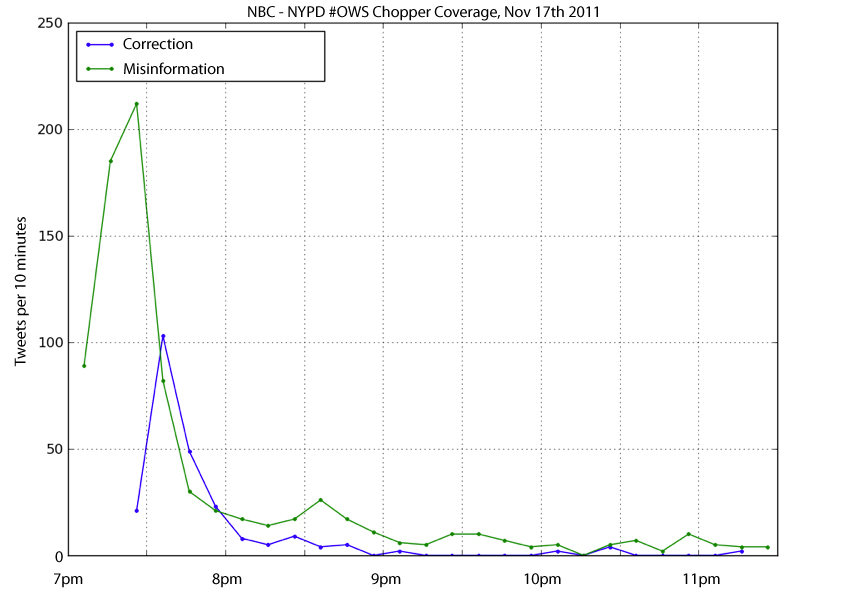Many times on Twitter I’ve witnessed what I call The Law of Incorrect Tweets:
Initial, inaccurate information will be retweeted more than any subsequent correction.
The goal should be to make the correction as viral as the mistake. But that’s a challenge, and Tuesday at Harvard’s Truthiness in Digital Media conference, I saw (for the first time) what it looks like when we fail.
The presentation by Gilad Lotan, the vice president of research and development for SocialFlow, included a chart that compared the Twitter traffic of an incorrect report to the traffic for the ensuing correction. It’s the Law of Incorrect Tweets visualized:

The data for that chart comes from one of three case studies he shared in this blog post. It focused on an incorrect tweet by NBC New York in November that said the NYPD had ordered its helicopter to move away from the site of the Occupy Wall Street protests:
Chopper 4 just told by NYPD to move — they are closing airspace over protests. #OWS #N17
— NBC New York (@NBCNewYork) November 17, 2011
That report was soon corrected by the NYPD Twitter account:
@NBCNews @NBCNewYork NYPD has never closed airspace and it is not our authority to do so. — NYPD NEWS (@NYPDnews) November 17, 2011
NBC New York and the main NBC News accounts tweeted out corrections, but, as you can see from Lotan’s chart, the new information did not reach as many people.
“People are much more likely to retweet what they want to be true, their aspirations and values,” Lotan wrote.
He also noted that he has seen corrections beat out incorrect information on Twitter, which is encouraging and suggests my “law” is maleable:
Does misinformation always spread further than the correction? Not necessarily. I’ve seen it go either way. But I can safely say that the more sensationalized a story, the more likely it is to travel far. Many times the story about about misinformation is what spreads, rather than the false information itself (for example: the Steve Jobs false death tweet which cost Shira Lazar her CBS gig).
If you understand the dynamic, you may be more likely to change it. One cause: Incorrect information is bound to be more provocative and interesting than a correction. The other cause is that too little attention is paid to making corrections on Twitter.
Journalists need to make the effort to contact anyone who retweeted the incorrect information and make them aware of the correction; it also helps to ask them to retweet the correction to their followers. I offer other advice for correcting tweets here.






